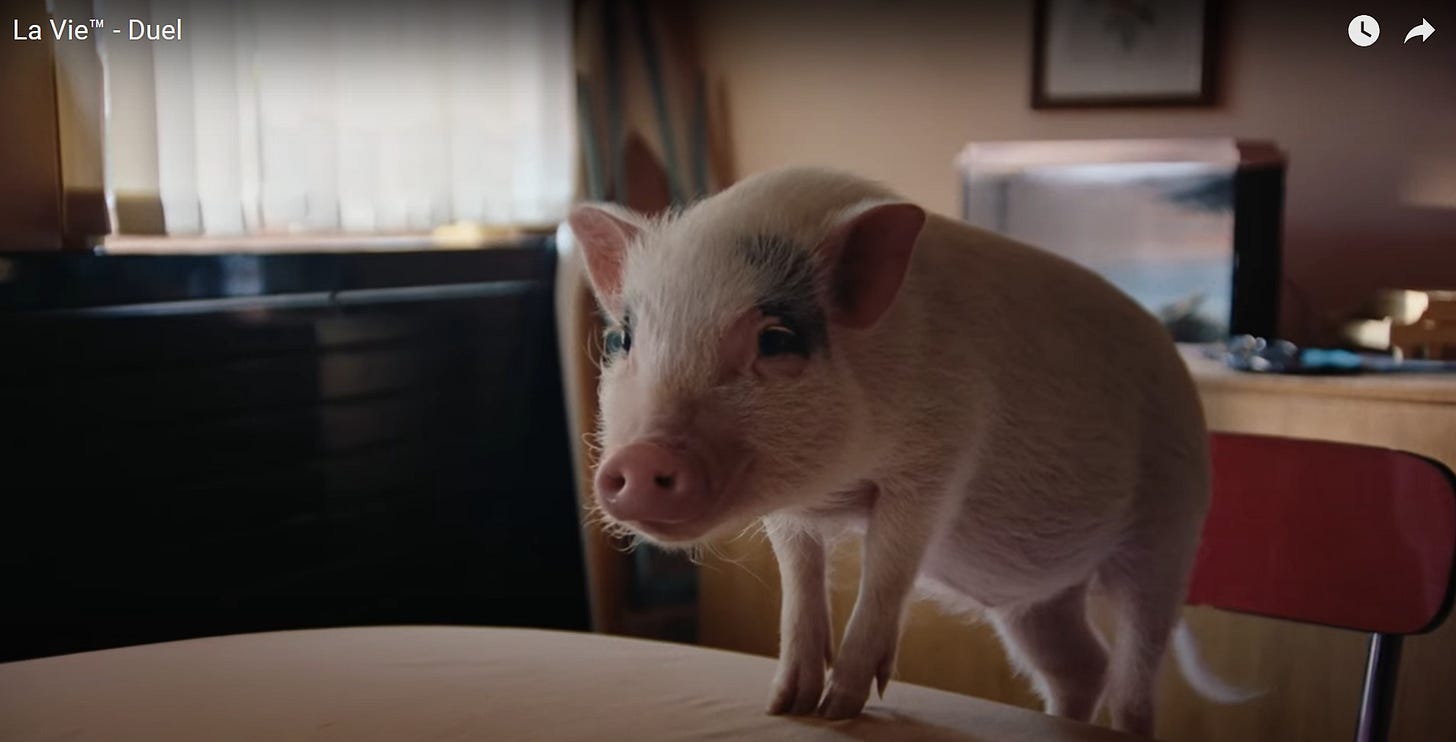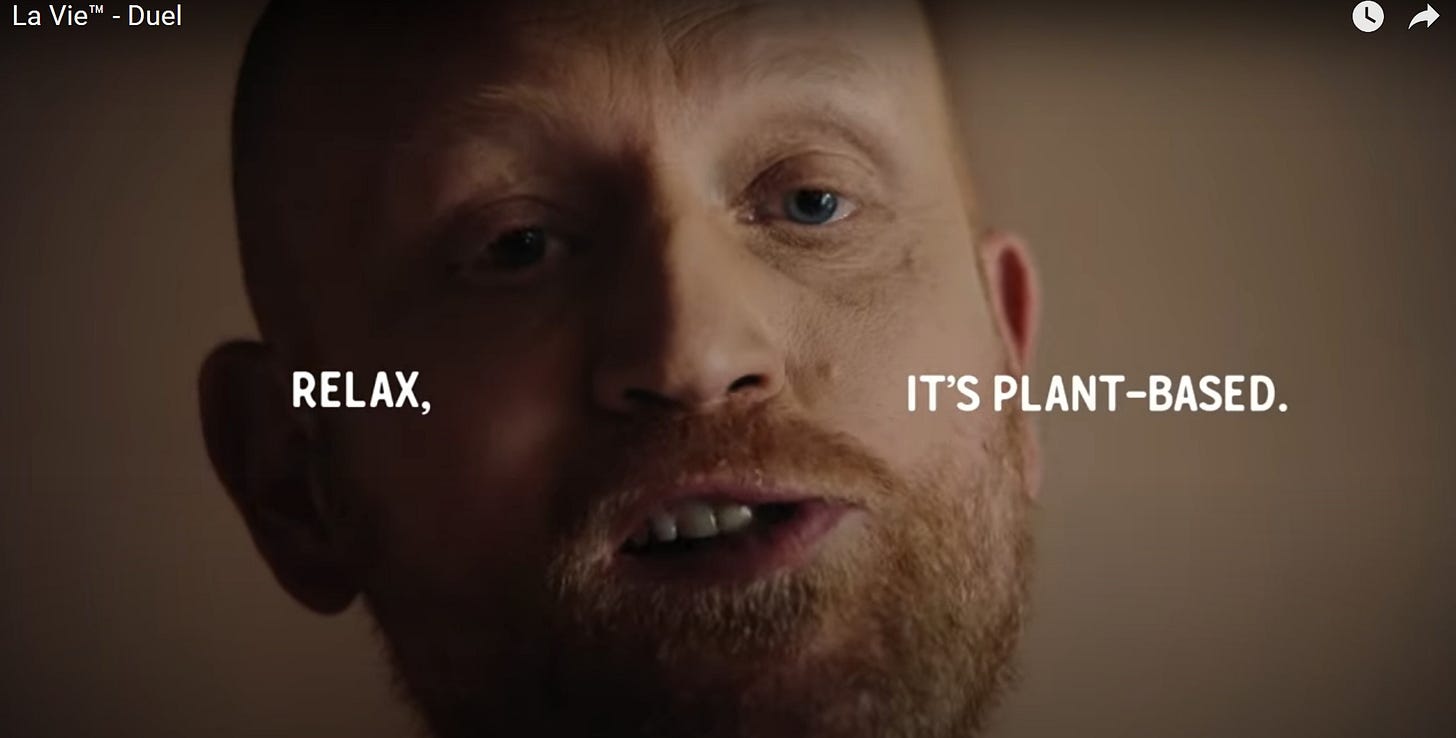Messages that move: a puzzle to be solved
Our latest blog series spotlights messages that can engage audiences in innovative and unexpected ways, and potentially shift attitudes
We all face the same dilemma as animal freedom communicators. We have limited space and time to convey our message to a busy, distracted audience that already feels like they have enough problems to deal with. The obvious solution is to communicate the conclusion we want people to arrive at - to save them the effort and to ensure they receive our message loud and clear. For example, we might see messages with lines like: ‘Farming animals is cruel’ or ‘Free-range hens suffer’. These are to the point and they can be effective - on some people. Because as animal freedom communicators, we know there isn’t one approach that works for all.
Another approach is to engage our audience with a message that invites them to actively participate in it. This might be through posing questions they have to think through or communicating a story that feels like a puzzle the audience has to figure out.
This recent video from Animal Justice Project riffs off a familiar childhood game by asking viewers to ‘spot the difference’ between two hens.
This cleverly gets the audience to really focus on the two chickens as individuals and find what’s unique about them. The message continues to pose questions to draw the audience in further, engaging them more deeply into this puzzle of a message.
And then they bring themselves into the message using ‘we’, which strategically places the viewer and messenger on the same ‘team’.
When they reveal the answer, they continue to keep the audience invested by asking a final question: Now you know the answer, can you spot the difference this time?
The final part of the message (below) could have been the whole message. And while that might have had an impact on some audiences, by allowing viewers to actively engage with the message as if they’re solving a puzzle, it feels like they’ve arrived at that conclusion themselves, rather than having been spoon-fed it.


What’s also novel about this message is it’s discussing cruelty in a way that shows no graphic imagery. It’s clear to the viewer that these aren’t healthy, thriving chickens, and it leaves them to imagine the conditions they were suffering in. And to question the truthfulness of marketing labels.
Another recent ad, from plant-based food brand La Vie, also invites audiences into their message in a novel way. Titled ‘Duel’, it opens with a man making himself a sandwich. While this is an everyday activity, the man is staring challengingly at someone as he makes the sandwich, and the scene is scored with dramatic violin music, building a sense of tension as the audience is forced to wonder: ‘What’s about to happen?’ Suddenly, a few seconds in, the camera pans around to reveal who the man is staring at…
And moments later, the camera zooms in on what kind of sandwich the man is making…
As the violin music continues to build, and the man stares defiantly at the pig as he eats the ham sandwich, the audience feels a lingering sense of unease and discomfort. Bringing into the same frame ‘animals as food’ and ‘animals as individuals’ is a bold move that brings to the fore the cognitive dissonance that most people struggle to contend with and actively try to avoid. But this ad encourages the viewer to face it head-on. And for one lengthy shot, the audience is forced to look straight into the pig’s eyes, temporarily assuming the viewpoint of the man eating the ham sandwich.
But while it’s playing with a topic that it knows can provoke cognitive dissonance and defensiveness, what’s clever about this ad is the audience will be less likely to shut down now as they are already invested in the story and want to find out what happens next. And La Vie directly acknowledges the emotions the audience will be experiencing by finishing with their USP:
It’s a story that’s tongue-in-cheek and playful, but it boldly takes the audience to uncomfortable territory and forces them to experience a rollercoaster of emotions. And while the audience is left to feel a sense of relief at the end, it subtly gets them to reflect on why they felt those emotions. And without even needing to say it, the viewer understands that La Vie’s USP isn’t just that it’s plant-based - it’s that its products are ‘guilt-free’. A classic example of messaging 101: ‘show don’t tell’.
Animal Think Tank will be testing a whole range of messages like these to better understand if and how they resonate with audiences - and, most importantly, why. If you’ve seen an ad or message that you’d like us to test, please email us at: narrative@animalthinktank.org.uk. We’ll be sharing our findings in the new year - and you’ll be the first to hear about them via our Substack blog.
For anyone who (rightly) feels concerned about using our animal cousins in ads, you can read more about Leon the pig’s filming experience in this Plant Based News article.












